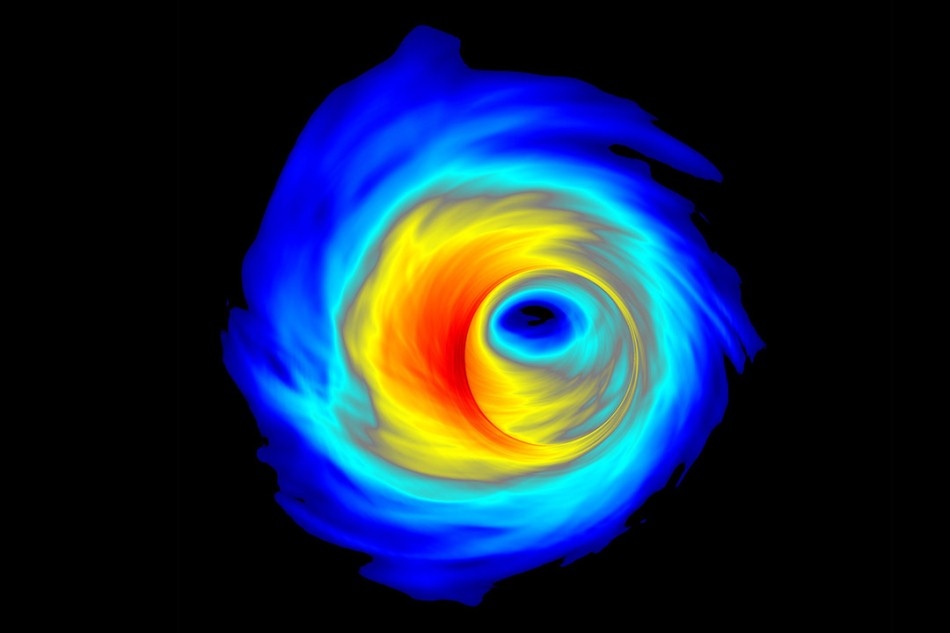Nov 11 2019
Researchers report that they have detected gravitational waves from 10 black hole mergers until now. However, they are still making efforts to elucidate the origins of the mergers.
 Simulation of an accretion disk surrounding a supermassive black hole. Image Credit: Rochester Institute of Technology.
Simulation of an accretion disk surrounding a supermassive black hole. Image Credit: Rochester Institute of Technology.
The largest merger observed to date appears to have disobeyed models developed earlier, since it has a higher mass and spin when compared to the range considered possible.
A team of researchers, which includes Assistant Professor Richard O’Shaughnessy from Rochester Institute of Technology, has formulated simulations that could throw light on how the merger took place.
In a new study reported in Physical Review Letters, the scientists propose that large mergers such as these could occur right outside the supermassive black holes located at the center of active galactic nuclei. Gas, dust, stars, and black holes are trapped in a region around the supermassive black holes, called the accretion disk.
According to the researchers, when black holes circle around in the accretion disk, they tend to ultimately collide and merge to give rise to a larger black hole. The larger black hole continues to consume smaller black holes, turning larger and larger, in what O’Shaughnessy terms “Pac-Man-like” behavior.
This is a very tantalizing prospect for those of us who work in this field. It offers a natural way to explain high mass, high spin binary black hole mergers and to produce binaries in parts of parameter space that the other models cannot populate. There is no way to get certain types of black holes out of these other formation channels.
Richard O’Shaughnessy, Assistant Professor, Rochester Institute of Technology
O’Shaughnessy is also a member of RIT’s Center for Computational Relativity and Gravitation (CCRG).
With the LIGO and Virgo collaboration continuing its pursuit for gravitational waves, O’Shaughnessy and his colleagues believe that they can detect signatures of enormous, spinning black holes that could be helpful to validate their models. In case their assumptions hold true, it could help gain better insights into the assembly of the cosmic web of galaxies.
This could be a unique way of probing the physics around these supermassive black holes in a way that could not be probed in any other way. It offers unique insight into how the centers of galaxies grow, which is of course essential to understanding how galaxies as a whole grow, which explains most of the structure in the universe.
Richard O’Shaughnessy, Assistant Professor, Rochester Institute of Technology
RIT’s CCRG has a huge and active group including 18 faculty, students, and postdoctoral researchers who are all involved in the LIGO Scientific Collaboration.